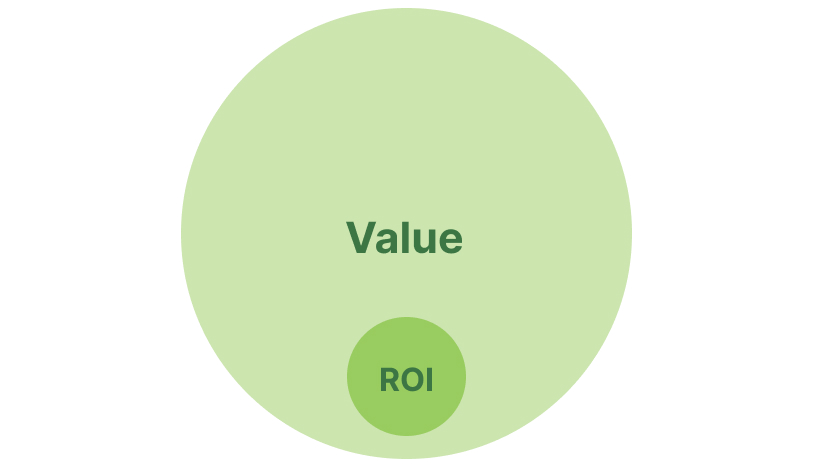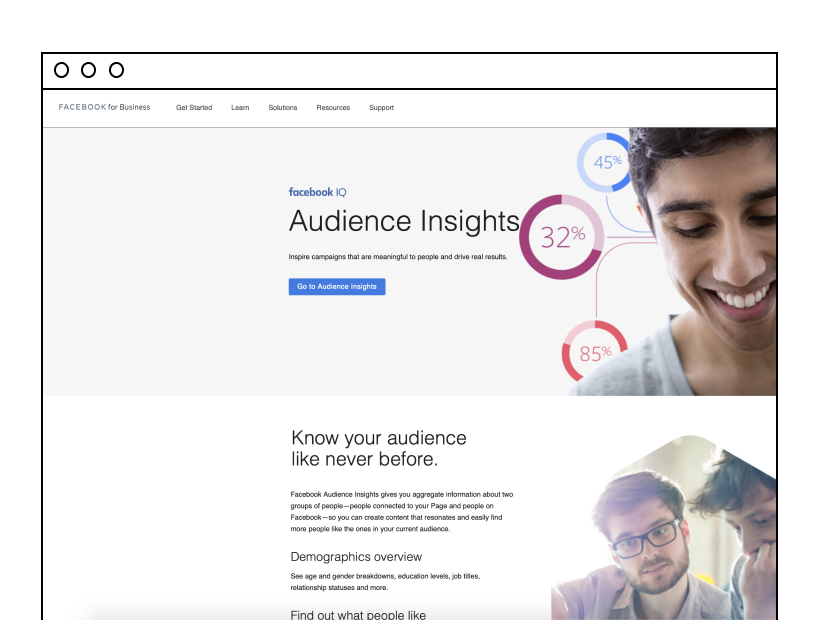Social media is one of the most acceptable forms of interactions with your customer. But how many businesses actually place a value on the return on investment (ROI) from social media? “Why even bother?” – some business owners say, and yet, you could be investing more time and money than you realize on social media.
In fact, with social media being so widely used and accepted, you and I simply may not appreciate the ROI of social media. Not every business owner understands what factors to take into consideration when calculating social media ROI. This is why they either calculate it incorrectly or avoid calculating it at all.
But is this the right approach to social media when using it for your business? Wouldn’t it be wiser and make more sense to see the value of social media ROI?
Many website builders such as Boxmode are including analytical tools to help you improve your social media performance. And this also means your social media ROI.
But before you start stressing about what we’re going on about, read on to find out more about social media ROI and how it plays a highly-effective role in your business strategy.
Understanding Social Media ROI
If you’re new to the term, social media ROI refers to the return on investment your business can expect to make based on the time and money spent on social media activities. We can assume most social media falls under your marketing budget line.
Marketers will convince you that online marketing is one of the most powerful ways to sell your brand and its products or services. And social media is one of the most popular marketing tools being used.
But how do you calculate the returns being made from all the efforts required when using social media as a marketing tool?
Calculating ROI
Placing a monetary value on the return on investment from social media may seem impossible. And yet, any company needs to calculate their marketing ROI if they want to know whether they’re wasting their money or not.

But why do a lot of business owners shy away from figuring out their social media ROI? Because they’re wondering how you place a number value on engagement and interactions with people on social media. It doesn’t seem very easy, especially when you’re using social media that doesn’t give a direct return in dollars and cents.
Let’s look at how ROI is normally calculated when using the following formula:
(Money received – Money spent)/ Money spent = ROI in percentage
This formula is perfect for calculating ROI when you have the numbers to plug into the formula’s various parts. But how do you know what’s actually been spent on social media engagement? And how much is being received back?
Let’s look at how much goes into social media marketing. You’ve got you or your employees’ time and effort. We all know just how much time can go into social media – before you know it, hours have been squandered away!
Then you have the cost of using the internet, setting up and managing social media pages, hardware expenses, the use of office space – the list goes on. So, placing a dollar figure on money spent becomes challenging.
How about the money received? If business owners or their marketers can’t get actual figures for money received, it’s going to be difficult to calculate ROI from social media. Marketers can try using the number of leads to convince themselves and their employers they’re making earnings. But this is not ROI – this is only results.
And this is when businesses either decide to drop social media marketing (if it doesn’t have a clear monetary value such as Facebook Ads). Or they ignore social media ROI completely, or they accept the contribution of social media to their business at face value.
Is Social Media ROI a Waste of Time?
If you’re an entrepreneur starting your online business, you may be tempted to skip social media ROI altogether. After all, who really wants to bother with all the logistics it takes to calculate any ROI from your social media.
Believe it or not, once you get your head around the concept of ROI, you’ll be well-placed to create value out of social media marketing. Instead of wondering if social media is a waste of time, try upgrading your mindset.

By understanding social media ROI and integrating it into your business, you’ll benefit from:
- The impact your social media campaigns are having on the company’s bottom line
- Knowing where your resources are being used most effectively cost-wise
- Identifying the problem areas in your social media campaigns and effectively being able to solve them
Nowadays, social media is the most acceptable form of marketing for any brand. It would be ignorant to hide from this fact. Add in social media ROI, and you have a powerful tool for making yourself accountable and improving your own campaigns.
Defining Social Media ROI for Your Business
Let’s get down to the nitty-gritty of what social media ROI means for you and your business. Why are you using social media in the first place? Yes, we know it’s one of the most acceptable ways of marketing your brand online and creating brand awareness. But why else are you engaging in social media?
Typical answers to this question could be:
- To build up community presence.
- To engage directly with customers, e.g., customer service.
- To keep my brand’s online presence active.
- To make money out of running ads.
When you have a clearer idea of why you’re using social media marketing, you’ll have a better sense of how much time and money you want to put into it.

Let’s look at the example of writing a blog for your company’s website. A lot of time goes into creating a blog. It has value when people read it. So your online presence is improved, but even more so when the number of people reading your blog increases.
When you’ve decided what kind of value you’re expecting from social media, you could consider using a formula focused on the value obtained from social media actions. Hootsuite suggests using the following formula to calculate your social media ROI based on value and investment:
Value/Investment X 100 = ROI percentage
With this formula, you’re placing emphasis on social media actions as your value. Investment relates to the time, efforts, costs of managing that particular social media.
Working with Metrics
You can’t get away from metrics. When we talk about social media metrics, we’re talking about data. And you need to understand the data so you can get a better sense of your social media’s impact on your company’s revenue.

Where do you get your data from? It could include sign-ups from email lists, purchases, downloads of an e-book you’ve offered, or inquiries on a contact list. Other metrics such as shares, followers, and general traffic can be included, although not much emphasis should be placed on them.
The more you play with the metrics, the more you’ll realize the value social media has for your business. And we’re talking beyond the value of engagement with your potential customers.
To get useful metrics, you need to set some measurable goals for your campaigns. By setting up goals, you’ll be working on coming up with actionable and measurable steps. And these should talk to how you’re going to convert a lead into a customer who actually purchases your product or service.
Setting Measurable Goals for Social Media ROI
When you’re planning for a successful campaign, you’ll want to design some effective, measurable steps. If you’re focusing on social media as your base for campaigning, you also need to focus on ROI.
While marketers may try to focus on the lead generation or the number of “tweets” a campaign received, the business owner understands monetary value better. After all, it’s the money they want to see flowing in, not the number of “likes” – unless you can show it’s been converted to sales.
So, you want to make sure you’re talking about the cost per click or cost per lead acquisition. This will make a whole lot more financial sense to your social media campaign.
If your main campaign focus is gaining as many leads as possible, then to equate the metrics to your social media ROI you want to talk about cost per lead.
Google Analytics is one way of setting measurable goals for social media ROI. Not only does it tell you all about your social traffic and which channels they’re using, but it can also help you with your social media ROI. By using Google Analytics Conversions (under Acquisitions), you’ll be able to set goals.
Using Social Media Analytics Tools
You can obtain insights by using other social networking media sites offering analysis of social media performance. Some examples of these built-in analytics tools include Linkedin Company Page Insights, Mailchimp’s audience insight, and Facebook Insights.

The insights obtained from these analytics tools are extremely useful in telling you how effective your campaign reach is. But they’re not giving you the kind of conversion information you need when looking at its impact on your company’s budget lines.
When summing up the metrics being tracked for useful social media ROI information, these would include:
- Audience reach
- Audience growth
- Engagements
- Clicks per site or page
- Conversion rates
Let’s go back to Google Analytics. Not only do you set your goals using this tool, but also you’ll see the results of conversions. And they can be all seen by creating a custom report. This report will include all the data coming in from the goals you initially set.
Conversion rates give you a monetary value to work with. Once you’ve set your goal on Google Analytics, you’ll need to include the URL destination for where you want the actual conversion to take place.
You’ll be asked to include a value for each conversion. This can be done by using either of the following formulas:
- Customer lifetime value x conversion rate. You’ll need to calculate your customer lifetime value and your conversion rate, e.g., the average number of leads converted to sales, before using this formula. The result will be the estimated value of each visit to your URL destination.
- Company’s average sales amount. You’ll need to know your company’s average sales for the product you’re tracking metrics for to calculate an average sales value.
The Google Analytics tool will then show the actual amount earned per conversion rate based on the information you’ve given it.
While this information indicates the amount earned based on social media traffic, you’re only getting one half of the ROI formula. You also need to know your social media costs.
Tracking the Cost of Social Media
When looking at the costs of using social media, you need to include both indirect and direct expenses. It’s easy enough to say you are spending $40 on Facebook Ads but are you placing any value on the time and effort that goes into getting your Facebook Ads online?
The key element of your social media ROI is your social media advertising budget. However, other expenses to be included in your calculation to get a real overview of your social media ROI should include the following:
- Time is money: Many businesses make the mistake of not placing value on time spent on a specific campaign. They may calculate using the employee’s (or your own) salary and equate it to the amount of time spent on a project. This will not give you a true reflection of how much time you or someone else spent on a specific campaign or project. It’s wiser to calculate the investment time per campaign if you want a true cost for your social media ROI.
- Content development: One of the pitfalls of running your own business is not placing a monetary value on the time you spent creating content for your site. Or, if you’ve outsourced it out to someone, you may not consider it part of the expense of running a social media campaign. Content development gets lumped into one budget and then forgotten when further campaigns are run. So, make sure you include this cost in every campaign cost estimation.
- Internet usage: Here’s another area many companies forget to include in calculations of running social media campaigns. Once again, internet usage is another budget item that gets lumped into a specific budget line instead of being calculated per campaign or project being run using it.
- Office expenses: Here’s an example of an indirect cost that should be included in measuring the cost of running a social media campaign. You’ll need to come up with an average cost (as with internet usage and other similar budget items) to use when adding the cost factor in the social media ROI calculation.
- Social media management software: One way of tracking social media metrics is to use social management tools. These software programs have been designed to simplify the process of managing your social media activity. These are costs that need to be included when running social media campaigns. Take an average cost per campaign by estimated how long you used the software program during a specific campaign.
Once you have your earnings and your expenses calculated, you can use the ROI formulas suggested earlier in this article. The key point to remember when calculating your social media ROI is to stick to specific campaigns. In this way, you’ll be better informed about which campaigns are working and which are wasting your time.
Final Thoughts
If you’re new to building your business, terms such as social media ROI can have you scratching your head! But it needn’t be that way, especially if you see the value of being savvy about ROI. Social media is your go-to when getting your brand out there, but when it starts to convert sales for your business, you’ll be wise to understand social media ROI.
Many entrepreneurs are turning to create their own websites using website builders such as Boxmode. If you’re one of these entrepreneurs, go one step further and explore the tools available by website builders to help you track your social media metrics. Hotjar and Crazy Egg are both analytical tools that can be integrated into your website.
Prove your social media campaign is worth the time and money it takes from your business by understanding and calculating its ROI. By doing so, you’re only adding more value to your marketing strategy. And, you’ll be saving yourself and your company time and money wasted when you know where you can improve.


